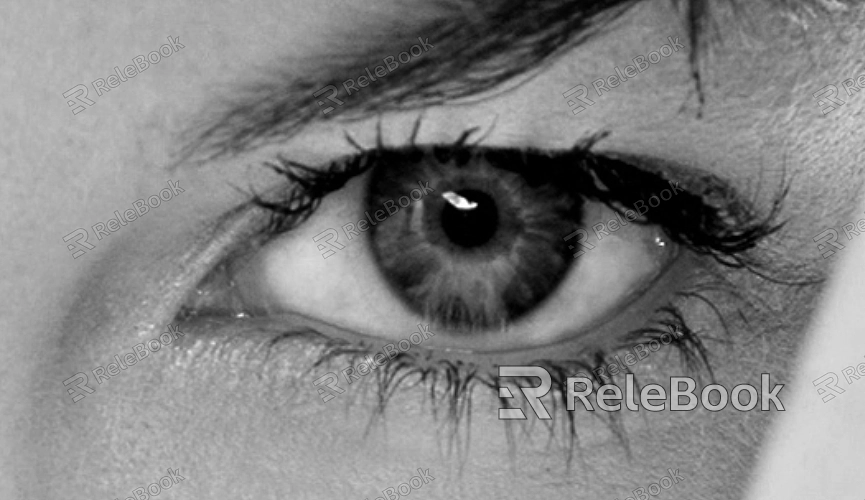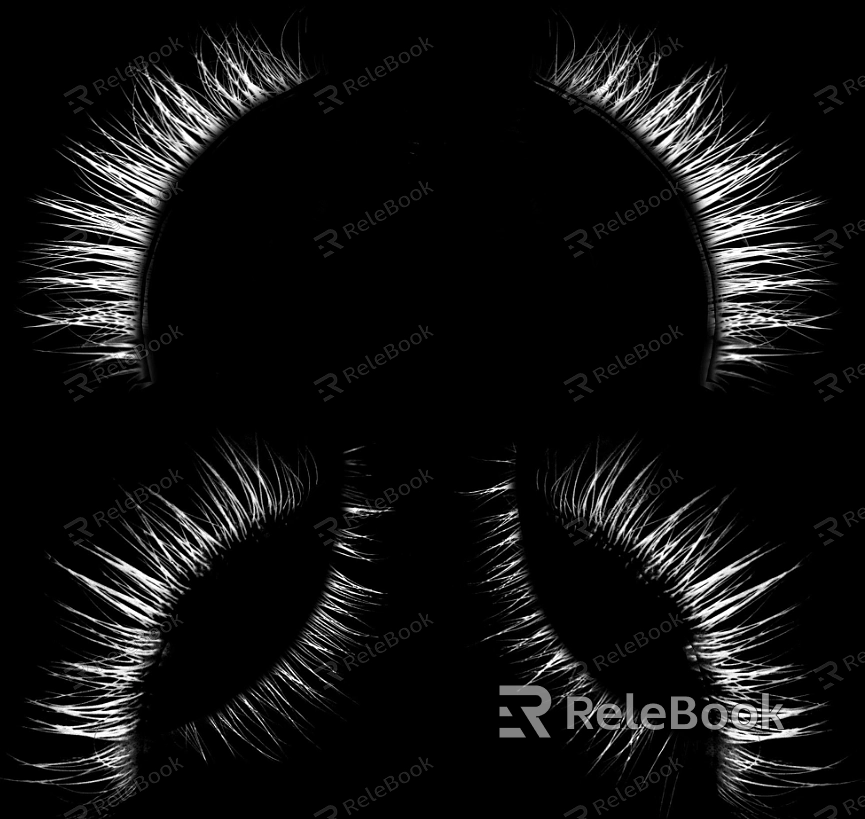How to Texture Eyelashes for a 3D Character
When creating 3D characters, adding realistic details is crucial for bringing them to life. One such detail is the eyelashes, which play a vital role in enhancing the character's facial expression, depth, and visual appeal. Texturing the eyelashes not only improves the overall detail of the character but also makes it appear more vibrant and lifelike. Whether using popular 3D software like Blender, Maya, ZBrush, or Substance Painter, there are various methods to create natural, detailed textures for eyelashes. This guide will walk you through some common techniques for texturing eyelashes on a 3D character, helping designers improve the character's overall visual effect.

1. Understanding the Basics of 3D Eyelash Texturing
Texturing eyelashes usually involves various elements, such as shape, detail, glossiness, and transparency. Unlike skin textures, which are typically smoother, eyelash textures focus on long, curved strands of hair that transition naturally into the skin. To ensure the eyelashes look realistic, the texture needs to be fine-grained and capable of displaying natural effects under different lighting conditions. When creating eyelash textures, designers should consider the following:
Texture Detail: The eyelash texture should have a fine structure, avoiding overly smooth or repetitive patterns.
Transition Effects: The transition between the base of the eyelash and the skin should be smooth and natural, with no harsh seams.
Transparency and Reflection: The transparency and reflective properties of the eyelashes contribute significantly to realism, especially when simulating glossiness and thickness.
By mastering these basic concepts, designers can effectively create natural and lifelike textures for 3D character eyelashes.
2. Texturing Eyelashes in Blender
Blender is a powerful 3D modeling and rendering tool widely used for character modeling and texture painting. When adding textures to eyelashes in Blender, the following steps can help achieve a realistic result:
Create the Eyelash Model: Start by creating the basic shape of the eyelashes using Blender's modeling tools. You can extrude and subdivide to form long, strand-like structures, then adjust their curvature and distribution based on the character's design.
UV Unwrapping: Make sure the UV map for the eyelashes is properly unwrapped to avoid stretching or distortion when applying the texture. You can use Blender's "Unwrap" function to unfold the UVs and ensure there is no overlap.
Import the Texture: Once you have the eyelash texture image ready, import it into Blender and adjust its scaling and position. The texture should include information about the color, transparency, and glossiness of the eyelashes.
Use Transparent Textures: To achieve a natural transparency effect, use an alpha texture to simulate the soft edge transition of the eyelash strands. Adjusting the material's transparency and reflection will further enhance the realism of the effect.
Detail Refining: Use Blender's texture painting tools to refine the details, particularly at the tips of the eyelashes, to avoid sharp or unnatural edges.
Blender’s robust set of tools allows designers to fine-tune and optimize eyelash textures, ensuring they look natural and fluid.
3. Sculpting Details and Textures with ZBrush
ZBrush is an excellent tool for adding fine details and sculpting intricate textures, making it ideal for eyelashes and hair. When texturing eyelashes in ZBrush, sculpting the details can significantly improve the realism of the strands:
Sculpt the Eyelash Roots: In ZBrush, start by sculpting the base of the eyelashes where they meet the eyelid to create a natural transition. ZBrush's powerful sculpting tools allow you to add fine detail to the connection between the eyelashes and the skin.
Detail Sculpting: Use ZBrush's brush tools to meticulously sculpt the texture of each individual eyelash strand, adding natural curl, glossiness, and transparency variations.
Generate Normal Maps: After sculpting the eyelashes, you can use ZBrush’s “Normal Map” feature to generate a normal map, further enhancing the depth and detail of the eyelashes.
ZBrush’s detailed sculpting capabilities are ideal for creating realistic, finely crafted eyelash textures, especially when showcasing the layers and complexity of natural hair.

4. Texturing Eyelashes with Substance Painter
Substance Painter is a professional 3D texturing tool widely used for creating textures on 3D assets, including eyelashes. It allows designers to have precise control over the texture's details and material properties:
Import the 3D Model: Start by importing the 3D character model into Substance Painter, ensuring that the UVs for the eyelashes are properly laid out.
Select Appropriate Materials: Substance Painter offers a wide library of skin and hair materials. Choose one that fits the eyelashes and adjust the material settings to suit the character’s design.
Paint the Eyelash Texture: Use the painting tools to manually paint the eyelashes' color, transparency, and reflective properties, ensuring smooth transitions and realistic detailing.
Refine the Details: Adjust parameters such as opacity and glossiness to fine-tune the visual effects and achieve the desired look.
Substance Painter's powerful painting and material adjustment features allow designers to meticulously control the texture and appearance of eyelashes, making them look even more realistic.
5. Adjusting Glossiness and Reflection for Eyelash Textures
The glossiness and reflection settings are crucial when texturing eyelashes. The glossiness directly affects how realistic the eyelashes appear, particularly under different lighting conditions. Reflection settings are essential for showing the shiny, reflective quality of the lashes. To optimize these aspects:
Adjust Glossiness: By tweaking the glossiness of the eyelash material, you can simulate how eyelashes look under various lighting environments, whether it's a soft, natural light or a more intense artificial one.
Reflection Settings: Using reflection maps or specular reflections, you can fine-tune the reflective qualities of the eyelash surface to enhance its natural appearance.
These adjustments will significantly enhance the realism of the eyelashes, making them appear vibrant and lifelike in the final render.
6. Finding High-Quality Eyelash Texture Resources
If you're looking for high-quality eyelash textures, Relebook offers a rich library of texture resources to help you quickly find the perfect material for your designs. Whether you need natural hair textures or fine eyelash details, Relebook has you covered. Visit https://textures.relebook.com/ to boost your design workflow and discover new creative inspiration!
By following the methods outlined in this article, designers can create detailed, realistic eyelash textures for 3D characters across various platforms and tools. Whether you’re painting textures in Blender, sculpting details in ZBrush, or fine-tuning materials in Substance Painter, each step helps enhance the realism of the eyelashes and improve the overall visual quality of your characters.

